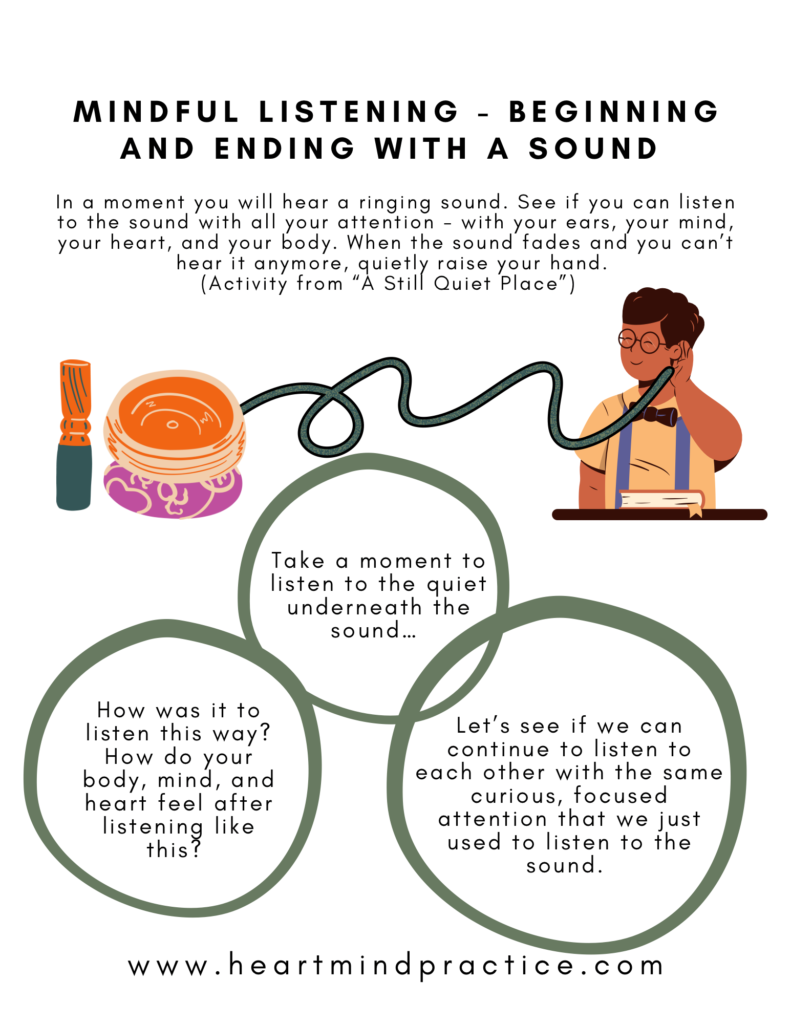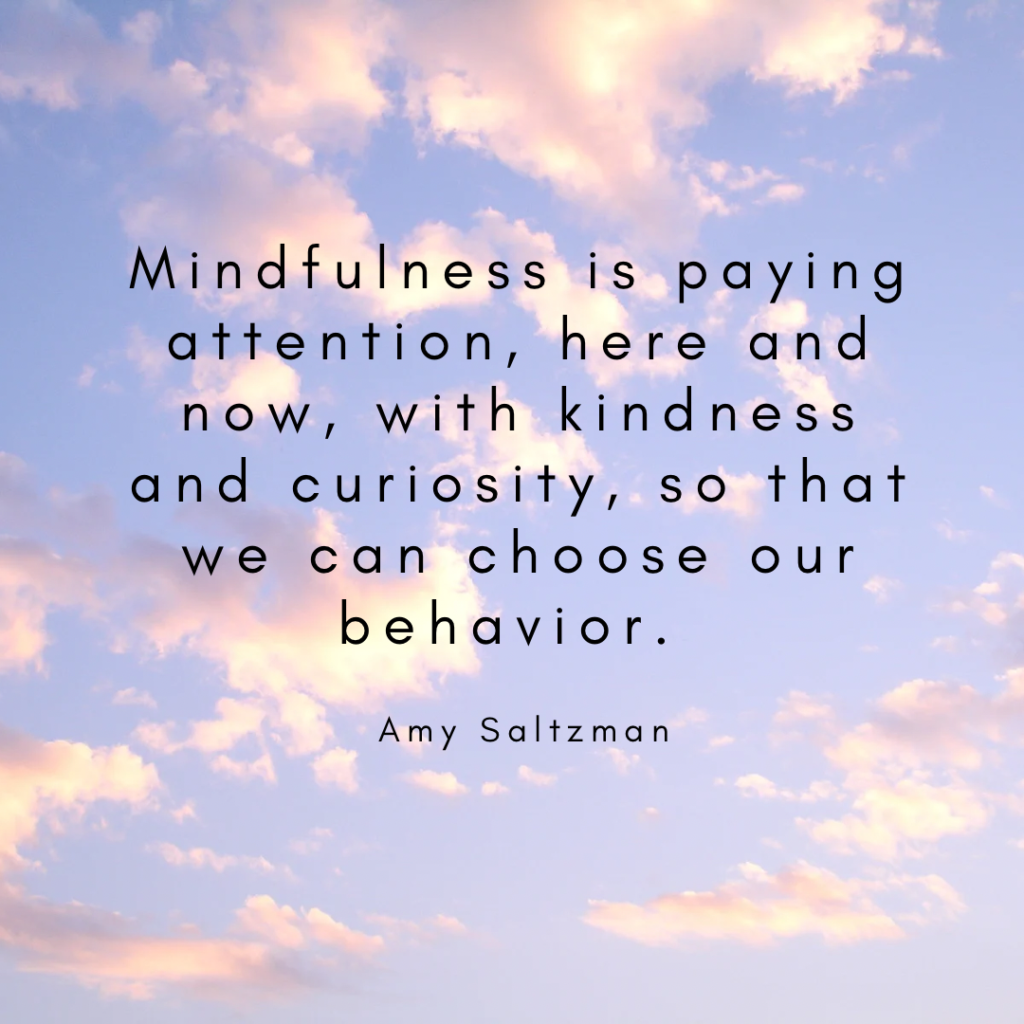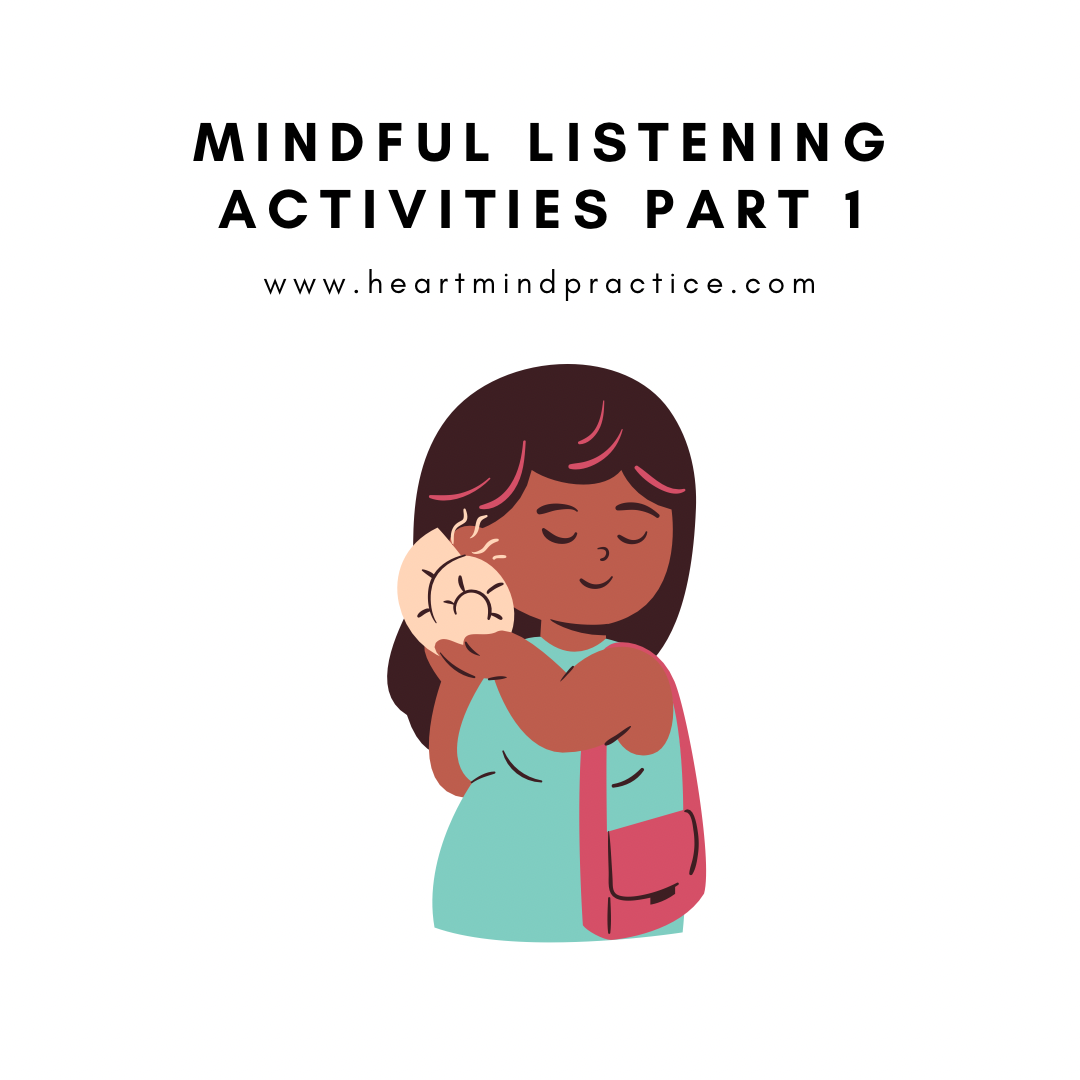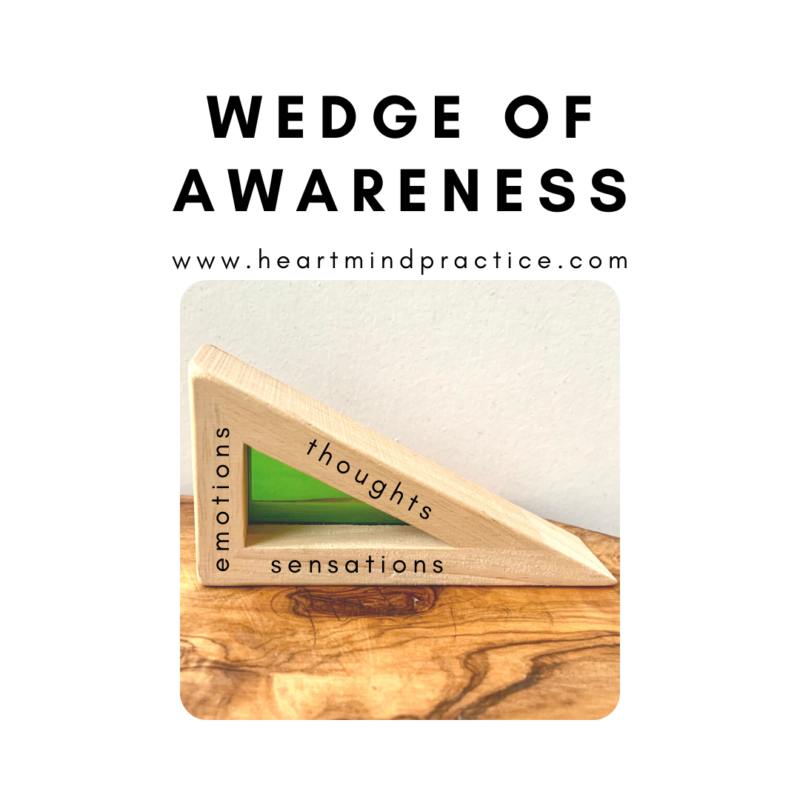Mindful listening is pretty hard to do; especially when emotions get involved. My dad has hearing loss and it’s getting progressively worse with age. When he can’t hear me, I often get frustrated and end up not listening to him even though I’m the one who can hear perfectly well. I’ve been to several hearing clinics with my dad over the years and it makes me realize how we take hearing for granted. As I type this, I can hear the rain falling outside, my son playing on the balcony, cars passing by…I’m learning to appreciate all the sounds.
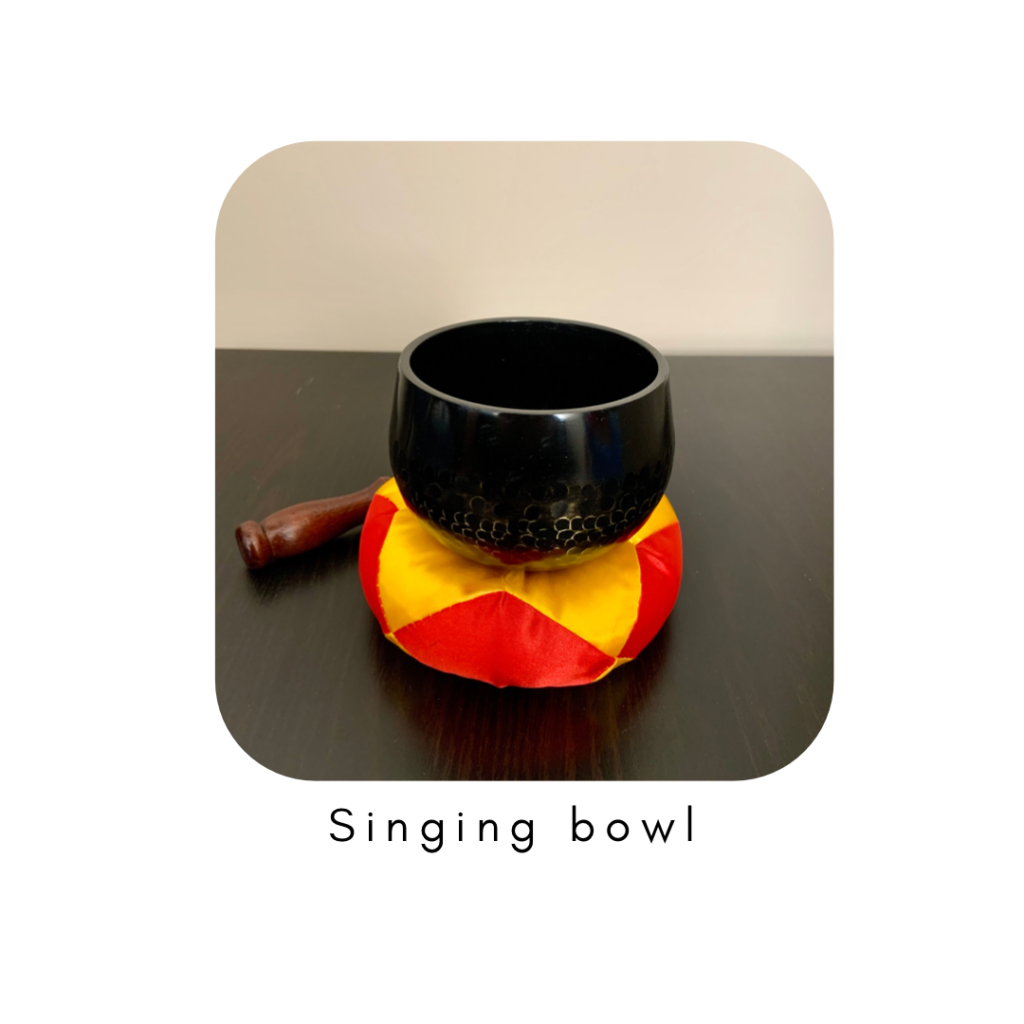
Sounds have a beginning and an end. And they can signal the start and finish of an activity. Beginning and ending a session with a sound can help establish a predictable ritual of mindfulness. Years ago I received a gift from my co-worker who went to Taiwan and brought back a singing bowl from one of the buddhist temples. This singing bowl brings out the curiosity of many young people as they enjoy making the bowl sing and hearing the sounds its makes. There are other instruments such as chimes, drums, or bells that can be used instead if it’s more appropriate to present a more neutral or non-spiritual method.
Once I introduce the purpose of the instrument and talk about mindful listening, each group starts and ends with a sound. Over time, the sound of the bell naturally initiates mindfulness as each person quiets their mind and body. This mindful listening activity is from the program “A Still Quiet Place” by Dr. Amy Saltman, which I referenced in my last post about bubble watching. I’ll probably keep referring to her book as it’s been such a useful guide.
Mindful listening activity – Beginning and ending with a sound
- Have your instrument of choice ready: singing bowl, chime, drum, bell, etc.
- Introduce the activity by letting the young people know that you will be making a sound in a moment. They can either close their eyes or look down during this activity.
- When you hear the sound, try to listen to the sound with all your attention – with your ears, your mind, your heart, and your body.
- When the sound fades and you can’t hear it anymore, quietly raise your hand.
- Wait till everyone has raised their hand and put it down together.
- Discussion questions: How was it to listen this way? How do your body, mind, and heart feel after listening like this? Can we continue to listen to each other with the same curious, focused attention?
- Explain that this listening practice we just did was mindfulness: Mindfulness is paying attention, here and now, with kindness and curiosity, so that we can choose our behaviour.
